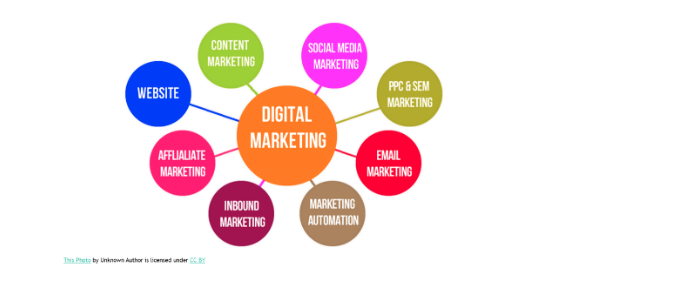
So what is Digital Marketing?
Search Engine Optimisation (SEO): SEO involves optimising a website’s content, structure, and technical aspects to rank higher in search engine results. The goal is to increase organic (non-paid) traffic by improving visibility when users search for relevant keywords.
Example: Optimising your website’s content with relevant keywords, improving site speed, and building high-quality backlinks to improve search engine rankings.
Video Example
Content Marketing: Content marketing focuses on creating valuable and relevant content to attract and engage the target audience. This includes blog posts, articles, videos, infographics, and more. The aim is to establish authority, educate, and ultimately drive conversions.
Example: Creating a series of blog posts and videos that provide in-depth information about a specific topic related to your industry, demonstrating your expertise and attracting a relevant audience.
Social Media Marketing: This involves promoting products or services on social media platforms like Facebook, Instagram, Twitter, LinkedIn, and others. It includes organic posting and paid advertising to reach and engage the target audience.
Example: Running a Facebook ad campaign to promote a new product, targeting users based on their interests, demographics, and online behaviour.
Pay-Per-Click Advertising (PPC): PPC involves placing paid ads on search engines (Google Ads) and other platforms. Advertisers pay a fee only when their ads are clicked. This method allows for precise targeting and immediate results.
Example: Creating a Google Ads campaign for a local bakery, bidding on keywords like “freshly baked bread” to ensure your bakery’s website appears at the top of search results when users search for that phrase.
Email Marketing: Email marketing involves sending targeted emails to a list of subscribers. It can be used for various purposes, such as promoting products, sharing content, nurturing leads, and building customer relationships.
Example: Sending a personalised email to your newsletter subscribers, offering them an exclusive discount on their next purchase to encourage repeat business.

Affiliate Marketing: In affiliate marketing, businesses collaborate with individuals or other companies (affiliates) who promote their products or services. Affiliates earn a commission for each sale or action generated through their referral.
Example: Running an affiliate program for your online course, where partners receive a commission for each sale they generate through their unique affiliate links.
Influencer Marketing: Brands collaborate with influencers with a significant and engaged following on social media. Influencers promote products or services to their audience, leveraging their trust and authority.
Example: Partnering with a popular fitness influencer on TikTok to promote your athletic apparel brand, with the influencer posting pictures and videos of themselves using your products during workouts.
Example:
Online Public Relations (PR): Online PR involves managing a brand’s reputation and building positive relationships with online media, bloggers, and influencers. It aims to create favourable online coverage and mentions.
Video Marketing: Video content is increasingly popular and can be used for various purposes, including product demonstrations, tutorials, storytelling, and brand promotion. Platforms like YouTube are essential for video marketing.
Example: Creating a series of tutorial videos on YouTube showcasing different makeup techniques and featuring your cosmetics products as part of the demonstration.
Example:
Analytics and Data Analysis: Digital marketing relies heavily on data collection and analysis. Tools like Google Analytics provide insights into website traffic, user behaviour, and conversion rates, helping marketers refine their strategies.
Example: Using Google Analytics to track user behaviour on your e-commerce website, analysing which products are most popular, where users drop off in the sales funnel, and which referral sources drive the most traffic.
Example:

Advantages of Digital Marketing:
- Global Reach: Digital marketing allows businesses to reach a global audience without geographical constraints.
- Cost-Effective: Unlike traditional marketing, digital marketing offers more cost-effective options, especially for small businesses and startups.
- Measurable Results: Digital marketing campaigns can be closely tracked, and data can be analysed in real-time to assess the effectiveness of strategies and make informed decisions.
- Targeted Audience: Precise targeting is possible in digital marketing, ensuring that messages reach the most relevant audience and increasing the chances of conversions.
- Interactivity: Digital marketing allows for two-way communication with the audience, encouraging engagement, feedback, and conversations.
- Flexibility and Adaptability: Digital marketing campaigns can quickly adjust or adapt based on real-time performance and changing market conditions.
- Brand Engagement: Digital marketing provides various channels for brands to engage with their audience, building stronger relationships and brand loyalty.
- Diverse Content Formats: Marketers can use various content formats like text, images, videos, and interactive content to engage users in different ways.
In conclusion, digital marketing is a dynamic and multifaceted approach to promoting products, services, and brands in the digital age. It continues to evolve with technological advancements and changing consumer behaviours, making it an essential aspect of modern business strategies.
